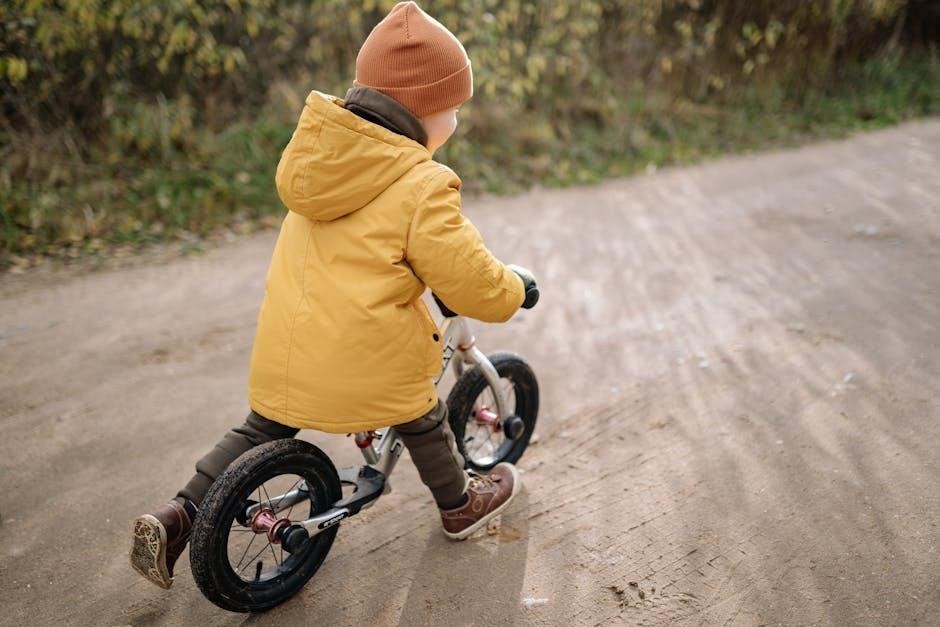
child bike size guide australia
Choosing the right bike size for your child is crucial for safety and comfort. In Australia‚ kids’ bikes are sized by wheel diameter‚ ensuring proper fit and ease of use. This guide helps parents select the ideal bike based on age‚ height‚ and inseam measurements‚ promoting confident and enjoyable cycling experiences for children.
Why Proper Bike Size Matters for Children
Proper bike sizing is essential for safety‚ comfort‚ and skill development. A bike that fits well allows children to control the bicycle confidently‚ reducing the risk of accidents. If a bike is too large‚ it can be difficult to manage‚ while a bike that’s too small may limit mobility and comfort. Correct sizing ensures your child can reach the pedals and handlebars comfortably‚ promoting proper posture and reducing fatigue. Additionally‚ a well-fitted bike fosters a positive cycling experience‚ encouraging independence and a lifelong love for riding. In Australia‚ ensuring the right fit is crucial for safe and enjoyable cycling adventures.
Understanding Kids Bike Sizing in Australia
Kids’ bike sizing in Australia is primarily determined by wheel size‚ ranging from 12-inch to 26-inch diameters. This system differs from adult bikes‚ which are sized by frame measurements. Wheel size directly impacts the bike’s overall dimensions‚ making it easier to match your child’s height and age. For example‚ a 12-inch bike suits toddlers‚ while a 26-inch bike is for pre-teens. This method ensures bikes are proportionate to the rider’s size‚ promoting safety‚ comfort‚ and ease of handling. Understanding these size categories helps parents choose bikes that grow with their child‚ fostering confidence and enjoyment in cycling.
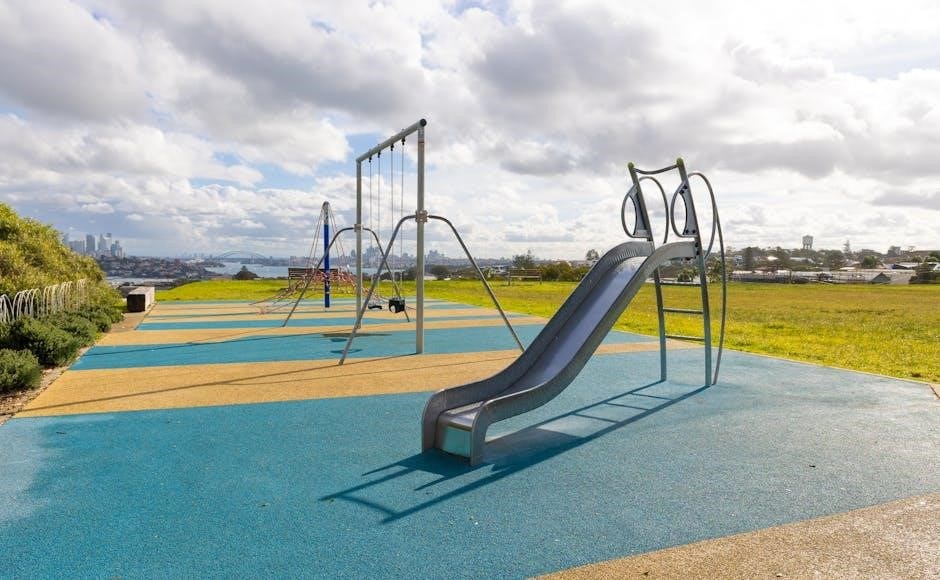
Key Factors in Determining the Right Bike Size
Wheel size‚ leg inseam‚ and age are critical factors for selecting the right bike. Proper sizing ensures safety‚ comfort‚ and ease of handling for children.
Wheel Size and Its Importance
Wheel size is the primary factor in determining a child’s bike size in Australia. Common sizes range from 12-inch to 26-inch wheels‚ each catering to specific age and height groups. A 12-inch bike suits toddlers aged 2-4‚ while a 26-inch bike is for older children nearing adult sizes. Proper wheel size ensures the bike is low enough for the child to touch the ground‚ promoting stability and safety. It also affects the bike’s maneuverability and comfort‚ making it essential to choose the right size for your child’s growth stage and cycling needs.
Leg Inseam Measurement for Accurate Sizing
Measuring your child’s leg inseam is crucial for accurate bike sizing. Stand your child against a wall with feet slightly apart‚ then measure the distance from the floor to the crotch. This ensures the bike’s standover height allows them to safely touch the ground. For example‚ a 12-inch bike suits an inseam of 35-42cm‚ while a 20-inch bike fits 55-63cm. This method‚ though less common in Australia‚ provides a precise fit‚ ensuring comfort and control while riding.
Age and Height as Secondary Indicators
While leg inseam is the most accurate measure‚ age and height can serve as helpful secondary indicators for selecting the right bike size. Generally‚ 12-inch bikes suit children aged 2-4 years (35-42cm inseam)‚ 16-inch bikes for 4-6 years (45-55cm)‚ 20-inch bikes for 6-9 years (55-63cm)‚ and 24-inch bikes for 8-12 years (60-72cm). Height charts align with these age groups‚ ensuring a suitable fit. However‚ individual growth rates vary‚ so always consider inseam for precision. Regular adjustments and test rides are recommended to ensure comfort and safety as your child grows.

Common Wheel Sizes for Kids Bikes in Australia
In Australia‚ kids’ bikes typically feature 12-inch‚ 16-inch‚ 20-inch‚ 24-inch‚ and 26-inch wheels‚ catering to children of various ages and heights‚ ensuring proper fit and functionality.
12-Inch Bikes: Suitable for Ages 2-4
12-inch bikes are perfect for toddlers aged 2-4‚ offering stability and ease of use. These bikes typically feature training wheels and a low center of gravity‚ ensuring safety. Designed for early learners‚ they often include adjustable seats and handlebars to accommodate growing children. The small wheel size allows for better control and balance‚ making them ideal for young riders mastering pedal coordination. With durable frames and child-friendly designs‚ 12-inch bikes are a great introduction to cycling‚ fostering confidence and excitement for kids just starting their biking journey in Australia.
16-Inch Bikes: Ideal for Ages 4-6
16-inch bikes are designed for children aged 4-6‚ offering a smooth transition from balance bikes to pedal bikes. These bikes typically come with training wheels‚ providing stability and confidence for young riders. Featuring durable frames and kid-friendly designs‚ they often include adjustable seats and handlebars to accommodate growing children. With single-speed gearing‚ 16-inch bikes simplify the learning process‚ allowing kids to focus on pedaling and steering. They are an excellent choice for improving coordination and balance‚ making them a popular option for children progressing in their cycling journey in Australia.
20-Inch Bikes: Best for Ages 6-9
20-inch bikes are suitable for children aged 6-9‚ offering a perfect balance between size and functionality. These bikes cater to kids who have outgrown smaller models but aren’t ready for larger frames. They often feature multi-speed gearing‚ introducing children to more advanced cycling mechanics. Training wheels are typically optional‚ allowing kids to build confidence and control. With adjustable components and lightweight frames‚ 20-inch bikes provide comfort and durability‚ making them ideal for riding on various terrain‚ from parks to bike paths‚ and are a great step in developing a lifelong love for cycling.
24-Inch Bikes: Designed for Ages 8-12
24-inch bikes are tailored for children aged 8-12‚ offering a seamless transition to larger frames. These bikes cater to taller kids‚ typically measuring 140cm to 160cm in height. Featuring advanced components like multiple gears and hand brakes‚ they provide better control and safety. The 24-inch size is ideal for developing riding skills and confidence‚ making it a great stepping stone toward adult bikes. With durable construction and adjustable features‚ these bikes ensure a comfortable and secure riding experience‚ suitable for various terrains and riding styles.
26-Inch Bikes: Transitioning to Adult Sizes
26-inch bikes mark the transition from kids’ to adult-sized bicycles‚ suitable for children aged 10-13 years. Designed for taller riders (140-160cm)‚ these bikes feature larger frames and wheels‚ offering enhanced stability and control. They often include adult-like components such as multiple gears and hand brakes‚ making them ideal for advanced riders. The 26-inch size is perfect for pre-teens who have outgrown smaller bikes but aren’t ready for full-sized adult models. This category bridges the gap‚ providing a smooth progression to independent cycling.
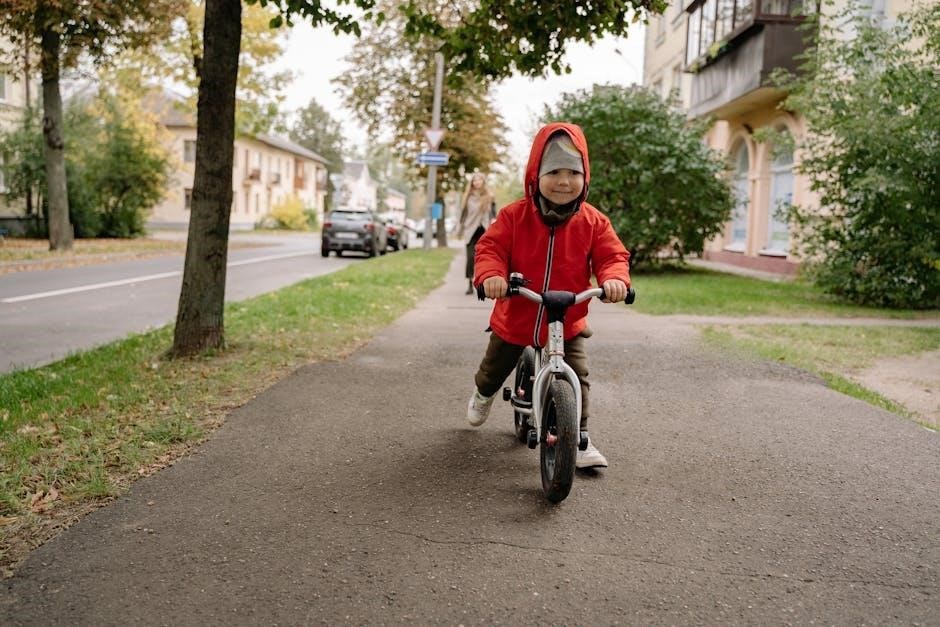
How to Measure Your Child for the Perfect Fit
Measure your child’s inseam by standing them against a wall with feet slightly apart. This helps determine the ideal bike size for comfort and safety.
Step-by-Step Guide to Measuring Inseam
To measure your child’s inseam accurately‚ stand them against a wall with feet slightly apart. Place a ruler or sturdy book upright between their legs‚ resting against the crotch. Mark the wall at the top of the book or ruler. Measure this distance to determine the inseam length. This measurement helps select the correct bike size‚ ensuring the bike is neither too small nor too large for your child. Accurate inseam measurement is essential for a safe and comfortable riding experience.
Using Height Charts for Bike Size Selection
Height charts are a practical tool for selecting the right bike size for your child. Measure your child’s height and compare it to the recommended height ranges for various bike sizes. For example‚ a 12-inch bike suits children 2-4 years old‚ while a 24-inch bike is ideal for 8-12 years old. Refer to detailed height charts to match your child’s growth with the appropriate wheel size. This method provides a reliable starting point‚ though inseam measurement is more precise. Always ensure the bike allows your child to stand over it with both feet flat on the ground for safety and comfort.
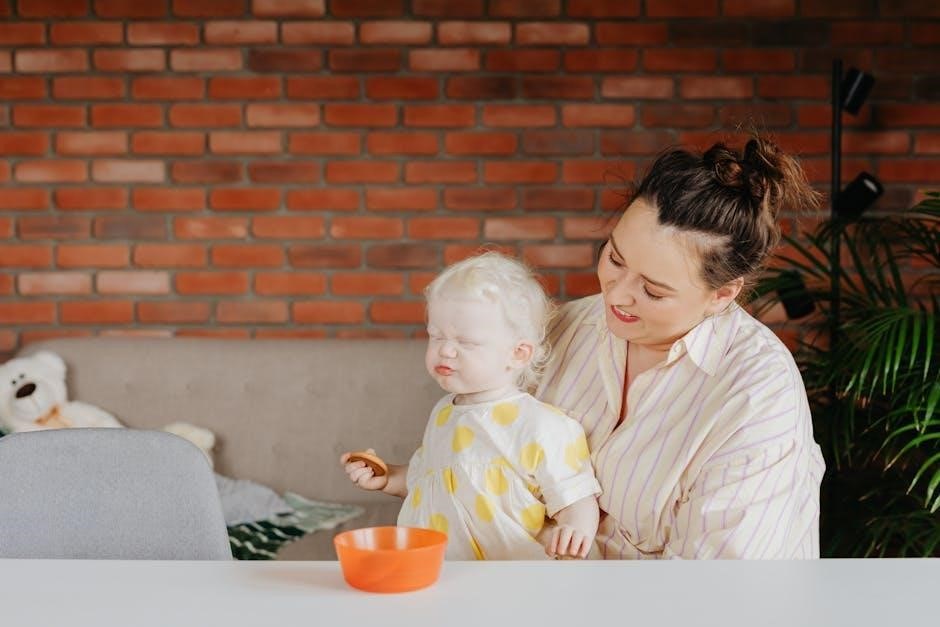
Additional Features to Consider
Look for bikes with adjustable handlebars and seats to accommodate growth. Lighter frames improve maneuverability‚ while reliable brakes ensure safety. Consider additional features like soft saddles and durable construction for comfort and longevity.
Brake Types: Safety and Ease of Use
When selecting a child’s bike‚ brake types are essential for safety and ease of use. Coaster brakes‚ operated by pedaling backward‚ are common in smaller bikes and require minimal maintenance. Rim brakes‚ activated by levers‚ offer precise control and are often found on larger bikes with gears. For younger riders‚ simplicity and reliability are key‚ while older kids may benefit from more advanced braking systems. Ensure the brakes are easy for your child to operate‚ as this builds confidence and promotes safe riding. Always test the brakes before purchase to confirm they function smoothly and effectively.
Handlebar and Seat Height Adjustability
Adjustable handlebars and seat heights are vital for ensuring a comfortable and safe riding experience for children. As kids grow‚ the ability to tweak these components allows the bike to accommodate their changing proportions. Look for bikes with easy-to-use adjustment mechanisms‚ such as quick-release seat posts‚ to simplify height modifications. Proper fit ensures better control and posture‚ reducing fatigue and discomfort. Many bikes also feature stem-mounted handlebars that can be raised or lowered to match your child’s reach. This adaptability not only extends the bike’s usability but also ensures your child remains confident and comfortable as they learn and grow.
Weight of the Bike and Its Impact
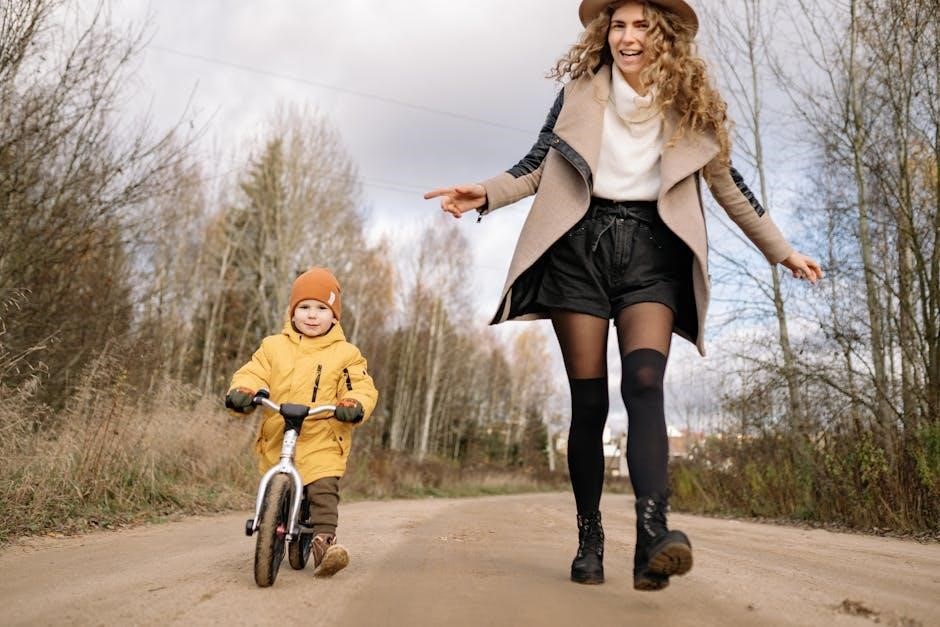
The weight of a child’s bike plays a significant role in their riding experience. Lighter bikes are easier for kids to handle‚ improving maneuverability and safety. Excess weight can make the bike harder to control‚ especially for younger riders. Look for bikes made from lightweight materials like aluminum‚ which offers durability without adding bulk. A well-balanced‚ lighter bike encourages better performance and confidence. While some parents may prioritize durability over weight‚ a lighter bike often means less effort for the child‚ making rides more enjoyable and helping them develop cycling skills more effectively.

Popular Kids Bike Brands in Australia
Australia’s popular kids bike brands include ByK Bikes‚ known for their precise metric sizing‚ Reid Cycles for affordable options‚ and Apollo for versatile models.
ByK Bikes: Known for Their Metric Sizing
ByK Bikes stands out for their unique metric sizing system‚ which aligns closely with the actual wheel diameter‚ ensuring accurate fit and performance. Unlike traditional inch-based sizing‚ ByK’s approach provides precise measurements‚ making it easier for parents to choose the right bike for their child. This method reflects the true wheel size‚ offering a more reliable guide for selecting bikes that match a child’s height and inseam. ByK’s commitment to this system ensures their bikes are tailored for optimal comfort‚ safety‚ and riding efficiency‚ making them a top choice for many Australian families;
Reid Cycles: Affordable and Reliable Options
Reid Cycles offers budget-friendly yet dependable bikes for kids‚ combining quality and affordability. Their range includes various wheel sizes‚ from 12-inch to 26-inch options‚ catering to children of different ages and heights. Reid Cycles ensures safety and comfort with features like durable frames‚ reliable brakes‚ and adjustable components. Parents appreciate their commitment to providing value without compromising on performance‚ making Reid Cycles a popular choice for families seeking affordable yet high-quality bikes that grow with their child‚ ensuring years of enjoyable cycling experiences in Australia.
Other Notable Brands and Their Specialties
Beyond ByK and Reid Cycles‚ other brands excel in specific areas. Apollo offers versatile bikes with advanced features like multiple gears and sturdy frames‚ ideal for growing riders. Woom bikes focus on lightweight‚ high-quality materials‚ enhancing maneuverability for younger children. Spawn Cycles specializes in kids’ mountain bikes‚ offering models with adjustable geometry for tailored fits. These brands provide diverse options‚ ensuring parents can find a bike that matches their child’s riding style and terrain preferences‚ whether for casual rides or adventurous trails‚ across various wheel sizes from 12 to 26 inches.
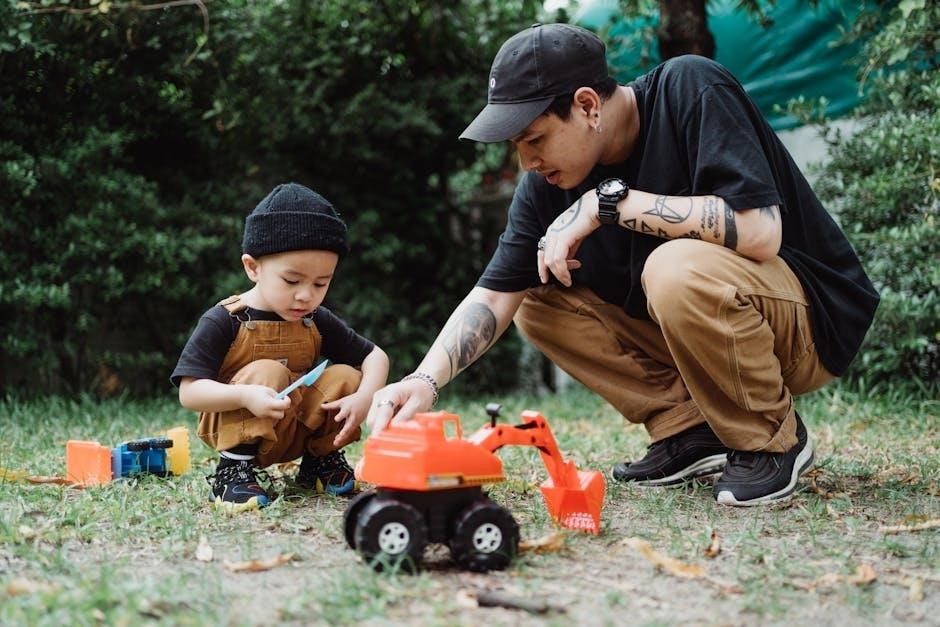
Buyer’s Guide and Tips
When purchasing a child’s bike‚ prioritize proper fit and safety features.
Always opt for a test ride to ensure comfort and ease of use.
Check for reliable brakes‚ adjustable components‚ and lightweight frames‚ ensuring the bike suits their age and skill level.
Consider return policies for size adjustments and warranties for long-term durability.
Where to Buy: Online vs. Local Bike Shops
When deciding where to buy a child’s bike‚ consider both online retailers and local bike shops. Online stores often offer convenience and a wide selection‚ but may lack the personalized service of local shops. Local bike shops provide expert advice‚ test rides‚ and proper bike fitting‚ ensuring the best fit for your child. They also offer after-sales support and maintenance. Online purchases should include a good return policy in case the bike doesn’t fit perfectly. Balancing convenience and expert guidance is key to making the right choice for your child’s cycling needs.
Test Rides: Importance of Trying Before Buying
A test ride is essential to ensure the bike fits your child comfortably and suits their riding style. It allows your child to assess the bike’s handling‚ braking‚ and overall feel. Local bike shops typically offer test rides‚ letting you gauge whether the size and features are right for your child. This hands-on experience helps prevent purchasing a bike that may not fit properly or meet their needs. A test ride is a crucial step in making an informed decision and ensuring your child’s safety and enjoyment while cycling.
Return Policies and Warranties
Return policies and warranties are crucial when purchasing a child’s bike‚ ensuring peace of mind for parents. A good return policy allows you to exchange or refund a bike if it doesn’t fit properly‚ which is especially important when buying online without a test ride. Look for warranties that cover the frame and key components‚ offering protection against defects. Many brands provide extended warranties‚ while Australian consumer laws also offer additional protection. Understanding these policies helps you make a confident purchase‚ knowing you’re covered if issues arise or the bike doesn’t meet expectations.
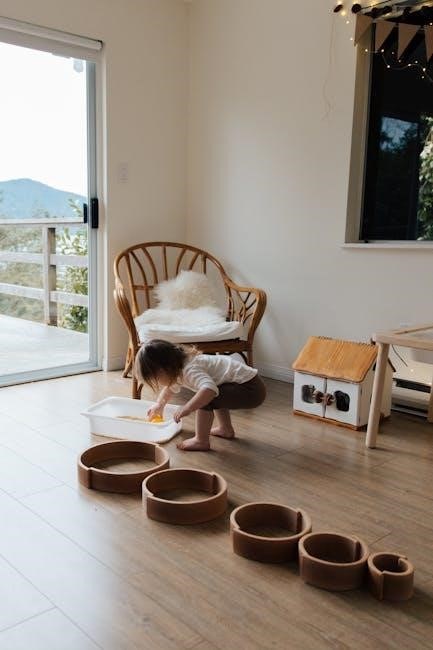
Maintenance and Safety Tips
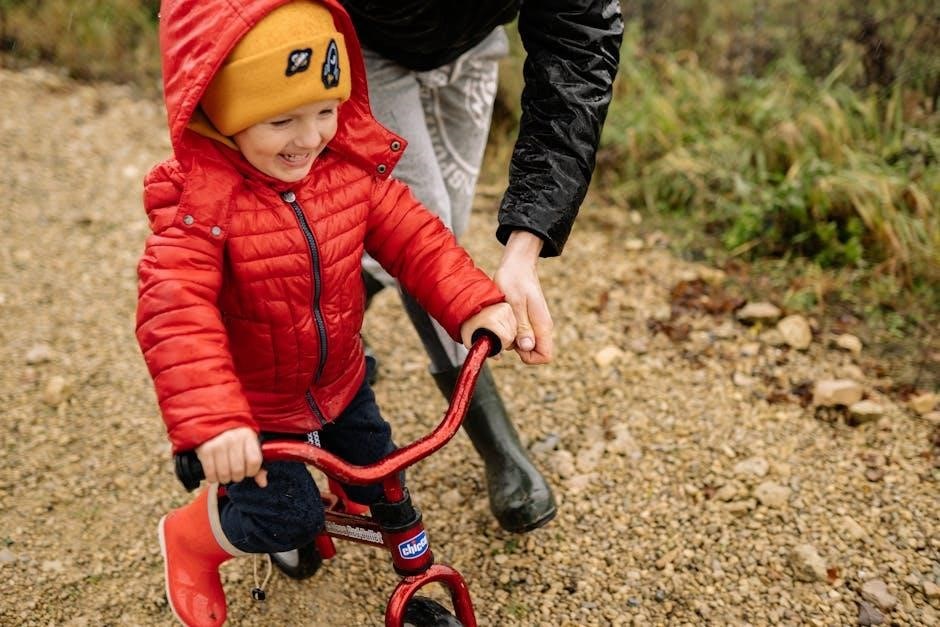
Regularly check tires‚ brakes‚ and chain for optimal performance. Teach your child to wear a helmet and follow traffic rules. Ensure the bike is well-maintained and safe.
Regular Checks for Safe Riding
Regular maintenance is essential for your child’s safety. Always inspect the brakes‚ tires‚ and chain before rides. Ensure tires are inflated to the recommended pressure and brakes function properly. Check for loose bolts on the handlebars‚ seat‚ and wheels. Teach your child to perform a pre-ride check‚ fostering responsibility and safety awareness. A well-maintained bike ensures smooth operation and prevents accidents. Encourage your child to report any issues immediately. Proper fitting and adjustments are also crucial for comfort and control. Regular checks help extend the bike’s lifespan and ensure your child rides safely and confidently.
Teaching Your Child to Ride Safely
Teaching your child to ride safely involves more than just balancing on a bike. Start with training wheels for stability and gradually transition to two wheels. Always ensure they wear a properly fitted helmet. Teach basic road rules‚ such as riding on the correct side of the path and using hand signals. Practice stopping and starting smoothly‚ and emphasize the importance of being visible. Encourage your child to stay alert and aware of their surroundings. Positive reinforcement and patience will help build their confidence. Regular practice in a safe‚ open area‚ like a park‚ is key to developing safe riding habits.
Selecting the right bike size for your child ensures safety‚ comfort‚ and confidence. Proper fit fosters a lifelong love for cycling‚ promoting active lifestyles and joyful adventures.
Final Thoughts on Choosing the Right Bike
Choosing the right bike for your child is a decision that impacts their safety‚ comfort‚ and enjoyment. By focusing on wheel size‚ inseam‚ and age‚ you ensure a perfect fit. Test rides are invaluable‚ allowing your child to feel the bike’s balance and ease of control. Remember‚ a well-fitting bike not only prevents discomfort but also reduces the risk of accidents. Invest in quality and adjustability to accommodate growth‚ making cycling a positive experience. A bike that fits properly is a gift that fosters a lifelong love for the sport‚ creating countless memories and promoting active lifestyles for years to come.
Encouraging a Lifetime Love for Cycling
Cycling is more than just a mode of transport; it’s a lifelong passion. By selecting the right-sized bike for your child‚ you lay the foundation for a love of cycling that can last a lifetime. A bike that fits properly ensures comfort and confidence‚ making each ride an enjoyable experience. As your child grows‚ so too will their skills and enthusiasm. Encourage them to explore new trails‚ join family rides‚ and embrace the freedom cycling offers. With the right bike and support‚ your child will develop a lasting appreciation for the joy of cycling and the adventures it brings.